Nestled in the heart of Alaska, Anchorage abounds with wonders. From lakes and rivers to the unspoiled wilderness of the open sea, the state’s largest city has it all. Fishing in Anchorage lets you appreciate the area’s rich cultural heritage, while also exploring its incredible natural wonders – not to mention the incredible fish species that are available throughout the area.

Whenever you come to Anchorage, you’ll be greeted with tranquil mountain streams, stunning landscapes, and gorgeous glaciers set against the scenic backdrop of the city. In this guide, we’ll discuss the most interesting fish species you can catch in Anchorage, as well as some of the best freshwater and saltwater fishing spots. We’ll also cover some of the most effective techniques and more. So without further ado, let’s dive right in!
What can I catch while fishing in Anchorage?
Since fishing in Anchorage gives you the best of both worlds, you can enjoy a variety of freshwater and saltwater species. In fact, some anglers combine the two when they have the chance. Here, ino particular order, are our top catches.
Top Anchorage Freshwater Species
Anchorage is home to a number of rivers, lakes, and streams. Wherever you go, chances are you’ll find a good place to wet your line, be it the Eagle or Knik River or the mighty Kenai just a short ride away. From early summer all the way through fall, there’s always something biting.
Salmon

Salmon are, undoubtedly, the crème de la crème of the local freshwater scene. Sport fishermen come to the Anchorage wilderness to pursue King “Chinook“ Salmon, Coho “Silver” Salmon, and Sockeye Salmon, each with their unique characteristics and challenges.
Chinook is the largest of the Pacific Salmon family, growing up to 100 pounds. While they’re typically caught in the ocean just like Sockeye Salmon, they can also frequent the rivers in and around Anchorage. Locals pack their heavy gear, lures, and bait, and head to Ship Creek for the annual run, or the Kenai River to target true monsters.
Silver Salmon are smaller than Chinook, although it’s hard to overestimate their strong fighting spirit. You don’t need heavy duty gear to fish for Coho, though. Anchorage anglers usually use fly fishing gear or lures in the area’s creeks, rivers, and lakes whenever the season allows.
Trout
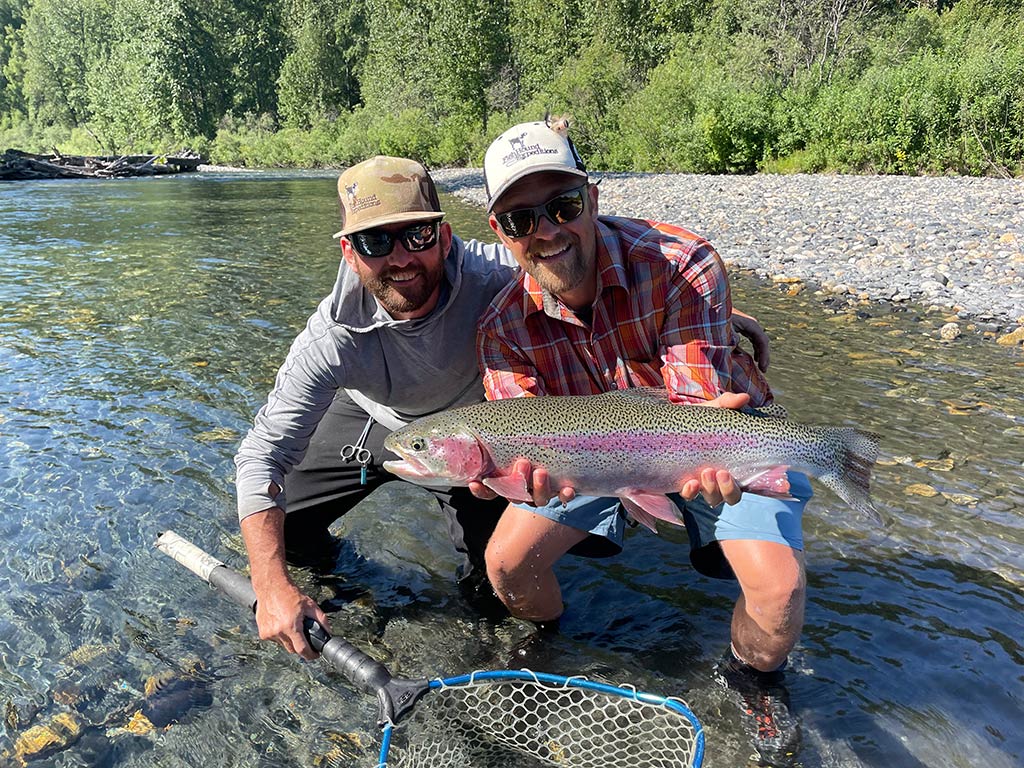
It goes without saying that the Anchorage fishing scene isn’t limited to Salmon. The area’s rivers, lakes, and streams teem with various types of Trout, including Rainbow Trout, Cutthroat Trout, and Lake Trout. Dolly Varden – named after a character in Charles Dickens’s novel “Barnaby Rudge” – are also on the Anchorage fishing menu.
Rainbow Trout, aka Steelhead, are highly prized by anglers from all over the country for their acrobatic jumps. Rainbows can grow up to 30 inches in length, although their size isn’t really the main advantage. These fish are popular targets among fly fishermen, but you can also bring a selection of lures to entice them to bite.
One of the most popular spots for Trout fishing in Anchorage is Little Campbell Lake in Kincaid Park. Here, anglers can catch Rainbow Trout, but that’s not all. The lake is also home to Cutthroat Trout, a popular fly fishing target, and Lake Trout, the largest Trout species in Anchorage.
Arctic Char
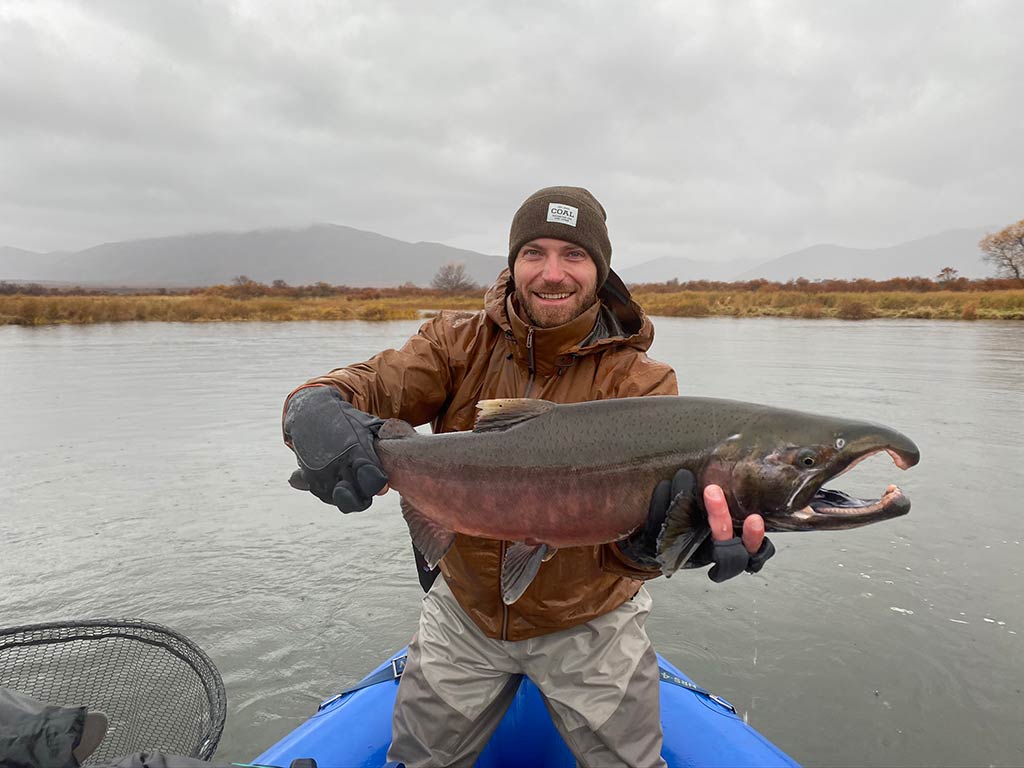
Arctic Char is a unique fish species you can find in the freshwater lakes and streams throughout Anchorage. These fish hang out in deep, cold lakes and rivers, as well as clear, fast-moving streams.
If you’re after delicious meat and acrobatic jumps, Arctic Char is an excellent target. The best time to look for these fish is from June to August, with the peak season in July. Locals often catch them on the fly, although lures and bait can also work. If conditions allow, you can look for Arctic Char while fishing for Salmon in Little Campbell Lake, Eklutna Lake, and the Kenai River.
Top Anchorage Saltwater Species
Whether you’re kite fishing in Kachemak Bay, exploring Cook Inlet or Turnagain Arm and Ship Creek, or just casting from a fishing pier in the city, you’re in for a treat. Anchorage is a great destination for saltwater fishing, with opportunities both within the city and just a short ride away.
Halibut
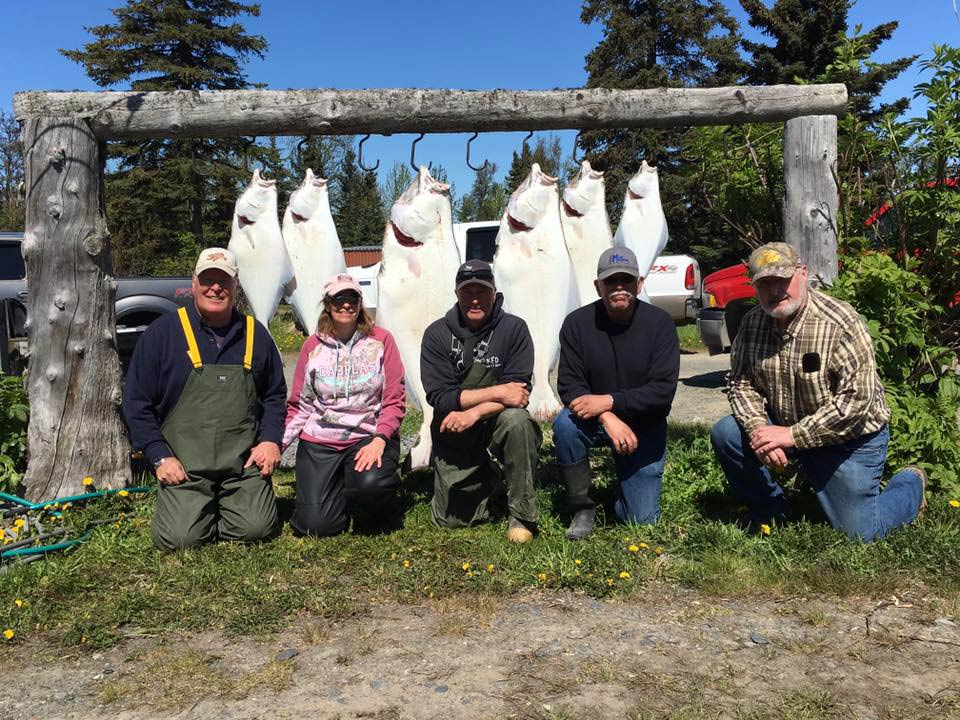
Whatever you call them—”Barn door,” “Flatties,” or “Butts”—Halibut are among the most popular saltwater targets in Anchorage, if not the whole of Alaska. These fish can grow to over 300 pounds, providing a great fight if you get them to bite.
Cook Inlet and Prince William Sound are the best places to hunt for Halibut in Anchorage. Plan your trip from May to September and take advantage of their peak season. Locals typically use large reels, heavy rods, and strong lines while bottom fishing for Halibut. Alternatively, you can try jigging with artificial lures.
Rockfish
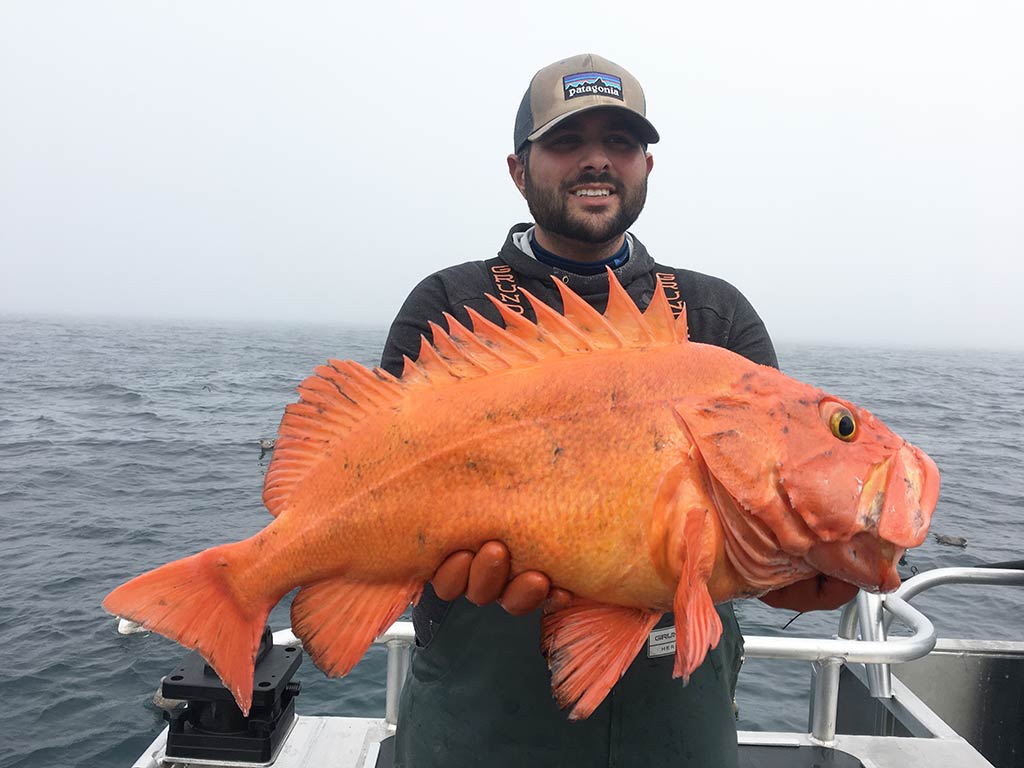
If you’re a Rockfish fan, you might already know that Alaska doesn’t disappoint. Anchorage is no exception. While these fish aren’t as popular as Halibut, they come in a variety of colors and patterns. There are over 30 species of Rockfish available throughout the year.
Rockfish typically patrol the rocky reefs and kelp beds in the saltwater areas, such as Cook Inlet. Depending on which species you’re after, you can target Yelloweye, Tiger, and Black Rockfish among others. Visit between May and September, and use light to medium spinning tackle with jigs or bait for the best chance of success.
Lingcod
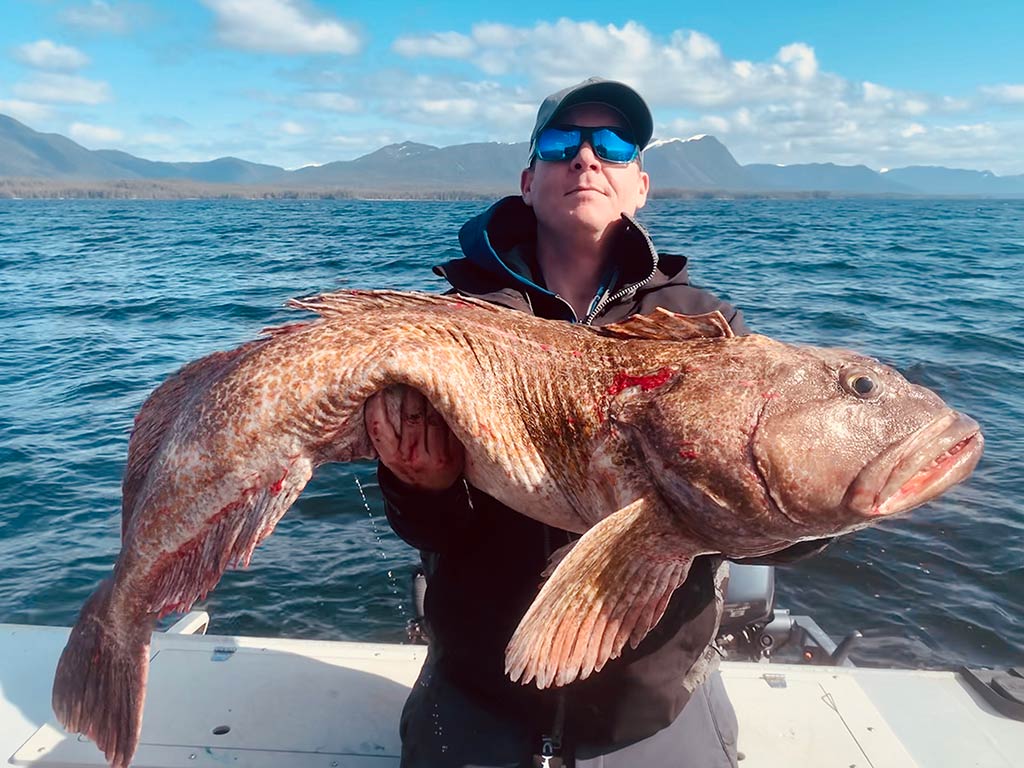
If you’re an avid angler, you won’t want to miss out on the chance to catch Lingcod in Anchorage. Known for their voracious appetite and exceptional fighting skills, these fish are hard to forget even after just one sighting. Lingcod can grow up to 5 feet long and can weigh over 80 pounds.
May to September, again, is the best time to target Lingcod in the area. Look for deeper waters near rocky reefs and underwater structures in Cook Inlet. When choosing your gear, go for heavy spinning and conventional tackle. If you’re looking for bait options, herring and octopus are highly effective for catching Lingcod.
Where can I go fishing in Anchorage?
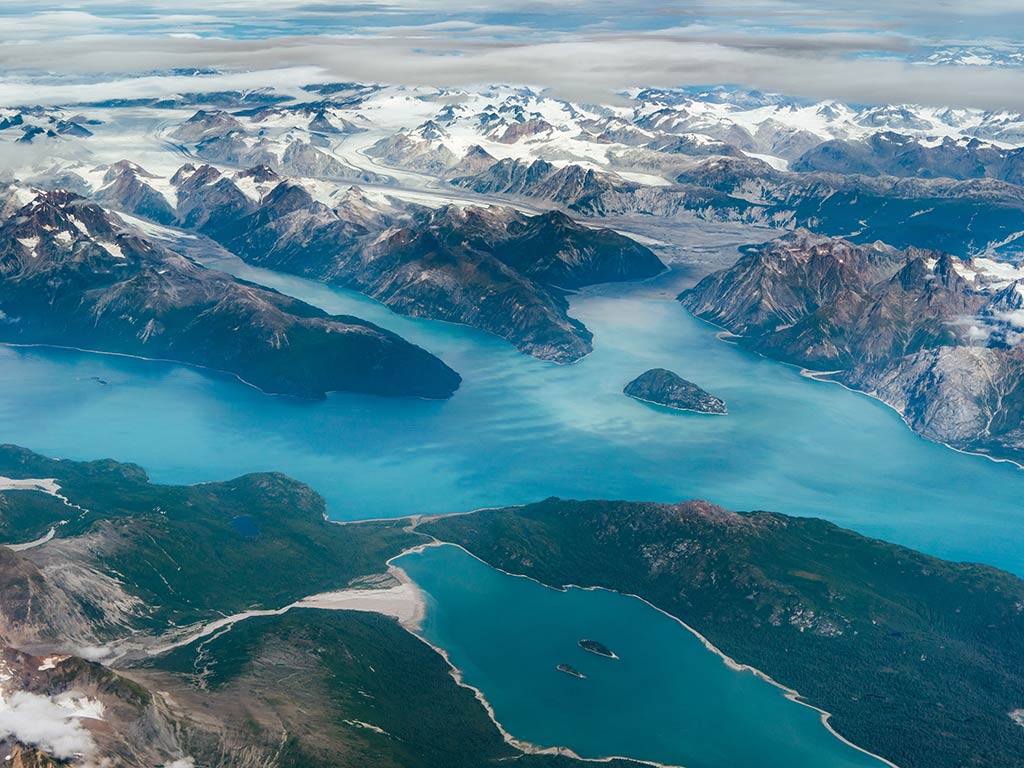
There are various spots throughout Anchorage where you can wet your line. If you’re after a saltwater adventure, start with the Seward Highway, which runs along the coast of the Cook Inlet. You can enjoy views of the ocean while fishing for Halibut and Rockfish. If you’re looking for a taste of Salmon and Trout, check the area’s lakes, rivers, and creeks whenever the season allows.
Here’s a list of our favorite spots in Anchorage for you to consider:
- Ship Creek. Located right in the heart of downtown Anchorage, Ship Creek is a popular spot for Salmon, Trout, and Char fishing. There are several designated areas along the creek, which are easily accessible on foot or by bike.
- Campbell Creek. This urban creek runs through the city and offers Salmon and Trout fishing. Anglers can use several access points throughout Anchorage, including the Campbell Creek Science Center.
- Little Campbell Lake. Situated in Kincaid Park, a large park in the western part of Anchorage, this lake offers good opportunities to target Trout, landlocked Salmon, and Char, as well as Dolly Varden. Little Campbell Lake is a catch-and-release fishery.
- Sand Lake. This freshwater lake in South Anchorage boasts pan-sized Trout, Salmon, and Arctic Char. You can fish from the shore or a non-motorized boat, or use the fishing pier at the south end of the lake. Sand Lake is also a popular ice fishing destination – more on that later.
- McHugh Creek. This stream is located in the remote part of the Chugach Mountains, just south of Anchorage. Several species of Salmon and Trout are on the fishing menu here, along with Dolly Varden and Grayling.
- Jewel Lake. Based in the heart of Anchorage, Jewel Lake is a popular spot for ice fishing and is known for its large Rainbow Trout. There’s also a fishing pier in its northeast corner, as well as access points for canoes and kayaks.
Even though Anchorage is located on Cook Inlet, you might want to explore some other nearby areas, too. Consider checking out what’s biting in Seward, Homer, and Whittier if you’re up for a scenic ride.
There are also various lakes and creeks within 25 miles of the city. Eklutna Tailrace, for instance, is a great spot on the Eklutna River where you can fish for Salmon, Rainbow Trout, and Dolly Varden. There’s also Bird Creek just 20 miles south of Anchorage, and Mirror Lake 20 miles northeast. The opportunities are endless!
How can I go fishing in Anchorage?
Ask a local fisherman about the angling opportunities Anchorage has to offer, and they’ll most likely tell you that the area provides an ideal environment for catching trophy-sized fish. Anchorage’s lakes, rivers, streams, and shoreline offer a variety of angling opportunities. Let’s look at how you can make your Anchorage fishing experience one you won’t soon forget.
Fly Fishing in Anchorage

While some of the prime Alaska fly fishing locations aren’t accessible by boat or on foot, there are plenty of spots in Anchorage you can explore. June through August is the best time to fish for Salmon, while Trout, Dolly Varden, and Char might bite well into September.
Some of the local waterways have shallow water, which is ideal for casting. You can pack your fly rod and head to Ship or Campbell Creeks, and Thunderbird Lake. Alternatively, you can head to the Kenai River for a world-class adventure or check out other rivers nearby, such as the Deshka and Little Susitna Rivers, or Montana Creek.
Your choice of gear will depend on the species you’re after. Chinook Salmon, for instance, are the largest Salmon species and require a heavy rod. While a 9 or 10 wt rod works well for Kings, you’ll need just a 7 wt rod for Coho and Sockeye as well as Dolly Varden. Other Trout species, such as Rainbow and Cutthroat Trout, can be caught on a 4 wt rod.
As for flies, locals often use streamers and bait fish patterns for Chinook, and egg patterns for Sockeye and Coho. Dry flies and nymphs are popular choices for Rainbow Trout and Arctic Grayling. In general, Woolly Buggers, egg patterns, leeches, and sculpin imitations are among the most popular flies in Anchorage.
Fishing with a Charter
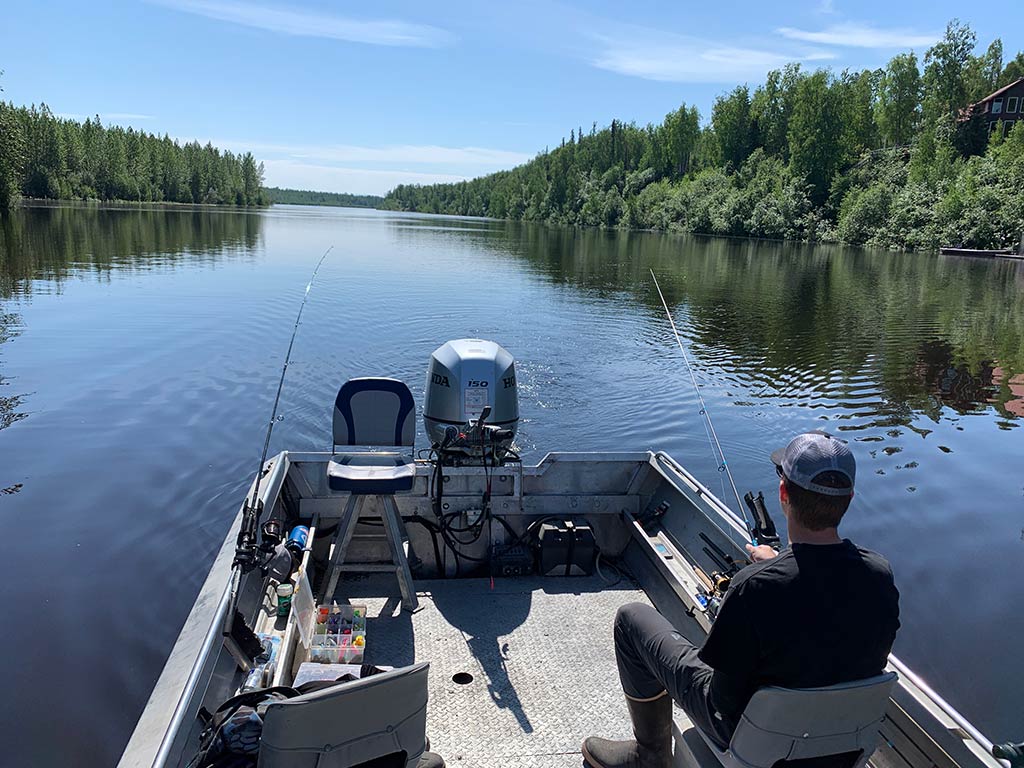
If you don’t want to worry about anything but catching fish, booking a trip with a local guide is the best idea. There are multiple professional teams in the area that can show you the most productive spots in and around Anchorage. Local guides have extensive knowledge of the waters and fish species. They know the best spots to fish, the most effective techniques and tackle to use, and they can provide all the necessary guidance and instruction to help you land that dream catch.
In addition to that, Anchorage captains and guides normally take care of all the equipment and tackle, as well as required permits. They can also offer a variety of fishing experiences, depending on the season and your desired location. Whether it’s fly fishing on a remote river, deep sea fishing for Halibut, or ice fishing on a frozen lake, hiring a guide increases your chances of having an enjoyable fishing trip.
Ice Fishing in Anchorage
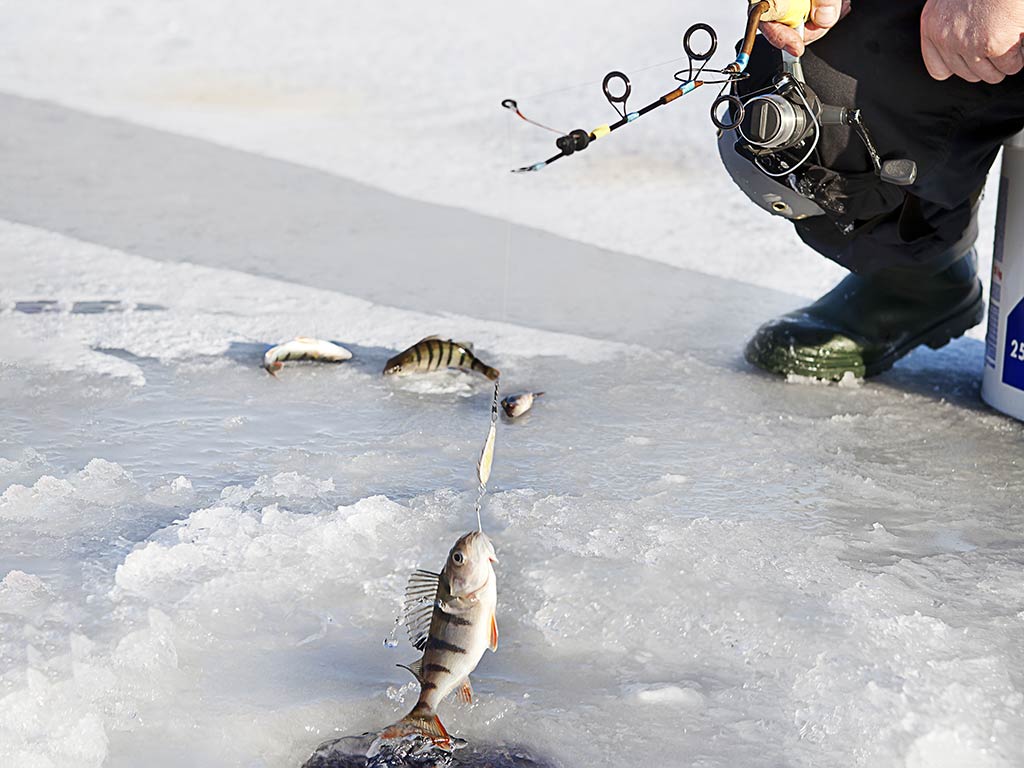
Anchorage can easily keep any angler busy throughout the year, and the winter months are no exception. Between late November and March, depending on the weather conditions and the thickness of the ice, anglers from all over the city explore the area’s frozen lakes.
During the cold winter months, you can take advantage of the Ekurna, Cheney, and Fire Lakes. Don’t hesitate to try different depths and locations until you find where the fish are biting best. Rainbow Trout, Arctic Char, and Grayling are among the most popular Anchorage ice fishing catches, although you can surely come across plenty of other winter species, too. Whatever target you have in mind, you can try vertical jigging with a small lure or bait. Note that fish can be more sluggish in cold water, so work the bait slowly.
Anchorage ice fishermen normally pack an 8–10″ ice auger to cut a hole in the ice. As for your fishing equipment, feel free to bring ice fishing rods and a small reel or spincaster, along with jigs, lures, and monofilament or fluorocarbon fishing lines in the 4–8 lb test range. Depending on where you’re planning to fish, you can also bring a portable ice fishing shelter and whatever accessories you may need.
When can I go fishing in Anchorage?
The short answer is that you can go fishing in Anchorage anytime of the year. The Salmon fishing season typically runs from May through September, with different species peaking at different times. King Salmon are most active in June, while Sockeye and Coho bite best in July and August. Trout fishing is generally best from late May through September, with the peak season in July and August.
If you’re planning a saltwater fishing trip, you can go anytime from spring through fall. Halibut season begins in May and continues through November, with the best fishing in the summer months. Cod and Rockfish are most abundant in spring and summer, although they can be caught year-round.
Whenever you decide to hit the waters, make sure to check with the Alaska Department of Fish and Game for the most up-to-date information. Fishing seasons and regulations in Anchorage can vary each year, as well as size and bag limits.
Anchorage Fishing FAQs
Fishing in Anchorage: Alaska’s Urban Playground

If you’re hooked on Anchorage, you’re not alone. Alaska’s untamed beauty is something every angler should experience at least once in their lifetime. Fishing in Anchorage gives you everything from fly fishing in tranquil mountain springs to bottom fishing for large Halibut in the open sea. All you have to do is come and see it for yourself!
Have you ever been fishing in Anchorage? What do you think about the fishing opportunities in Alaska’s largest city? Let us know in the comments below!
The post Fishing in Anchorage: The Complete Guide appeared first on FishingBooker Blog.
https://ift.tt/4qh0SCA
0 Comments
Enregistrer un commentaire